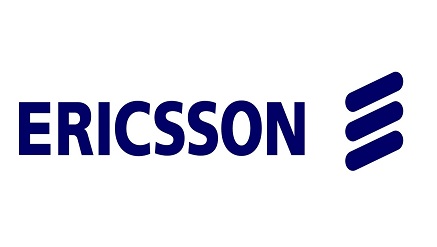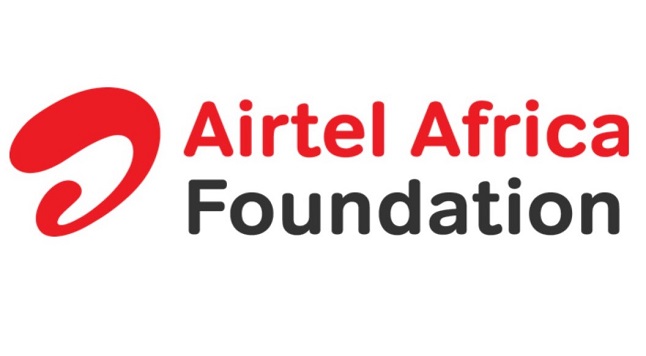Telecom
5G Doubles Mobile Data Speeds with No Additional Spectrum- Ericsson

Today, LTE smartphone receives transmissions from one cell site at a time, and many different techniques are used to ensure that users stay connected as they move between cells.
But, with smartphone subscriptions set to more than double, driving an 8-fold increase in traffic by the end of 2020, today’s mobile technology won’t be enough to maintain high quality connections as traffic grows.
Advanced LTE techniques, such as carrier aggregation, deliver more capacity by bringing together multiple frequency bands, but spectrum will always be a limited resource.
The challenge is exacerbated by a growing number of connected things, the so-called Internet of Things or IoT, jockeying for mobile network links.
The next big generation of mobile networking, known as 5G, is not expected to be commercially available until 2020, but Ericsson already has indoor and outdoor 5G test networks in Sweden and the US. Ericsson’s latest 5G technology breakthrough provides a way to deliver drop-free, higher capacity mobile connections for both people and things – while making the most of available spectrum.
Mischa Dohler, chair professor of Wireless Communications and head of the Centre for Telecommunications Research (CTR), King’s College London, said, “High-speed, highly reliable mobile networks are foundational to the tactile internet and the internet of skills that it will enable. The results that are being achieved in Ericsson’s live 5G test networks — much faster data rates, more resilient connections and squeezing capacity out of spectrum – are all critical to unleashing the new use cases that will drive 5G.”
Ericsson’s latest 5G innovation sounds deceptively simple: The 5G mobile device connects to more than one 5G cell site at the same time.
This is known as 5G multipoint connectivity.
It provides the resiliency to ensure that the 5G device maintains a high-quality connection with the 5G network as it moves between cells.
It also enables the transmission of different sets of multiple data signals (Multiple Input Multiple Output, or MIMO, streams) to the mobile device over the same frequency band.
This is called distributed MIMO, and it can increase downlink throughput by 100%.
And, because it is all transmitted in the same frequency band, it makes very efficient use of available spectrum. The combined technical capability is called Multipoint Connectivity with Distributed MIMO.
Dr. Håkan Andersson, 5G Strategic Product Manager, Business Unit Radio, Ericsson, said, “To be ready for commercial networks in 2020, 5G research and development has to come out of the labs and into live test networks. Multipoint Connectivity with Distributed MIMO, supported on Ericsson’s 5G air interface, is just the latest example of 5G innovation moving into live test network implementation.”
Multipoint Connectivity with Distributed MIMO involves very sophisticated signaling methods, which are not part of today’s LTE standards, to control the mobile device’s interaction with the network.
So, while LTE technology is evolving to become an integral part of tomorrow’s 5G networks, 5G will also include innovative new air interfaces (including signaling, modulation schemes and other software-driven innovations) between the device and the network.
Ericsson’s 5G air interface, dubbed “NX”, powers Multipoint Connectivity with Distributed MIMO.
5G will evolve the entire communication eco-system, from devices to mobile access, IP core and into the cloud.
The Company’s latest 5G test network innovations focus on the interactions between mobile devices and the radio access network, indoors and outside.
Ericsson’s 5G test networks, including both 5G devices and 5G radio base stations, are running live at the company’s US and worldwide headquarters in Plano and Stockholm.
The company welcomes mobile operators, eco-system partners, members of academia, tech media and analysts to visit these sites to witness and interact with Ericsson 5G innovations.
Telecom
MoMo PSB Brings Relief to UNILAG Students with Ultra-Cheap Bus Fares

MoMo Payment Service Bank (MoMo PSB), a fintech subsidiary of MTN Nigeria, has announced a partnership with Ogata Electric Vehicles to provide subsidised bus rides of ₦10 per fare to students of the University of Lagos (UNILAG).

MoMo PSB
The initiative, unveiled on Thursday in Lagos, is aimed at easing transportation costs for young Nigerians, particularly students, as part of MoMo PSB’s broader commitment to financial inclusion and digital accessibility.
MoMo PSB, which provides millions of Nigerians with secure financial services including transfers, savings, card services, bill payments and wallet solutions, said the transport subsidy reflects its mission to improve everyday life by reducing the cost of essential services.
The company explained that the partnership with Ogata Electric Vehicles would not only make commuting more affordable for students but also promote sustainable mobility through the use of electric buses.
Officials of MoMo PSB noted that the initiative is designed to bring “good cheer” to the UNILAG community, ensuring students can access safe, reliable and cost-effective transport while focusing on their education.
Telecom
MTN Nigeria Launches Unlimited 5G Broadband Plans to Boost Digital Inclusion

MTN Nigeria has launched its Unlimited Broadband Data plans powered by 5G technology, a move the telecoms giant says will tackle long-standing challenges of capped data limits, high costs and unstable connectivity faced by internet users across the country.

MTN Nigeria
Egerton Idehen, Chief Broadband Officer of MTN Nigeria, said the new product was designed to support high-demand users including streamers, gamers, households and businesses requiring uninterrupted connectivity.
“We’re building a broadband experience for everyday life. For content creators, remote workers, gamers, students and households. Our focus is on speed, reliability, low latency, and affordability.
“Broadband is designed to deliver seamless connectivity that empowers Nigerians to thrive in the digital economy,” Idehen said.
The plans, available in speed-based variants of 50Mbps and 100Mbps, promise lightning-fast speeds and ultra-low latency to address issues of lag and buffering. MTN said the packages would also provide affordable and flexible options to cater to diverse economic segments.
New customers who purchase a 5G router will enjoy a welcome bonus of unlimited data for the first 30 days, allowing them to experience the service before committing to long-term use.
The company explained that the initiative was part of its broader commitment to digital inclusion, enabling Nigerians to access stable connections for virtual meetings, large file transfers, online learning, high-definition streaming and professional gaming.
Customers can subscribe to the Unlimited Broadband Plans by dialling 4611#, using the MyMTN app, MTN eShop, MTN website, or visiting authorised retail outlets nationwide.
Telecom
Airtel Africa Foundation Opens Undergraduate Scholarship Portal in Nigeria

The Airtel Africa Foundation has opened applications for its Undergraduate Tech Scholarship in Nigeria, inviting first-year university students with strong academic potential to apply for financial support aimed at accelerating their studies in technology and related fields.

The scheme provides full tuition, accommodation support, and essential study materials for eligible 100-level students. It forms part of the Foundation’s F.E.E.D. agenda, which promotes Financial Empowerment, Education, Environmental Protection, and Digital Inclusion, with a focus on creating pathways for talented young people who face financial barriers.
Airtel Nigeria CEO, Dinesh Balsingh, encouraged students to take advantage of the opportunity. He noted that, “Education is one of the most powerful tools for national development,” adding that “as an organisation, Airtel is determined to build a platform for aspiring young Nigerians to learn, innovate and lead in the country’s expanding technology landscape.”
Applications are open to students pursuing courses such as Information Technology, Computer Science, Software Engineering, Data Science, Cyber Security, Artificial Intelligence, and other ICT-related disciplines at participating universities: University of Lagos, University of Nigeria Nsukka, Ahmadu Bello University, University of Benin, Obafemi Awolowo University, University of Ilorin, and Tai Solarin University of Education.
Dr Segun Ogunsanya, Chairman of the Airtel Africa Foundation, said the scholarship demonstrates the organisation’s commitment to nurturing Africa’s next generation of digital leaders. “Young Africans are brimming with talent and ambition. What many need is a fair chance to pursue their education without financial pressure. This scholarship reflects our belief that investing in their growth will strengthen communities, empower families, and expand the continent’s digital future,” he said.
Applicants must be enrolled in 100-level, have scored at least 230 in JAMB, and hold a minimum of five credits in WAEC, including English and Mathematics, in a single sitting. Required documents include Joint Admissions and Matriculation Board (JAMB) results, university admission letter, West African Examination Council (WAEC) certificate, student identity card, and academic transcript or university results.
The Foundation encourages qualified students across the listed institutions to apply and position themselves for a stronger start in the technology sector. Applications can be submitted at candidate.scholastica.ng/schemes/airtelfellowship2025.

 E-Financial3 days ago
E-Financial3 days agoCBN Rejigs Financial Inclusion Strategy to Boost Economic Growth

 E-Financial3 days ago
E-Financial3 days agoSEC Urges IST to Freeze all CBEX Bank Accounts in Nigeria

 News3 days ago
News3 days agoFG to Use Digital Economy Initiatives to Curb Corruption Among Youth

 E-Business3 days ago
E-Business3 days agoFinancial Sector Faced AI, Blockchain and Organised Crime Threats in 2025 – Report

 Telecom3 days ago
Telecom3 days agoCOUCH 2025 Grand Finale Highlights Student Breakthroughs, Secures Government Pledge for University Research Commercialization

 Broadcasting3 days ago
Broadcasting3 days agoEnd of an Era as Multichoice Delists from JSE After Canal+ Takeover

 Telecom2 days ago
Telecom2 days agoAirtel Africa Foundation Opens Undergraduate Scholarship Portal in Nigeria

 E-Financial2 days ago
E-Financial2 days agoEcobank Nigeria to Fully Repay $300m Eurobond Ahead of Schedule














